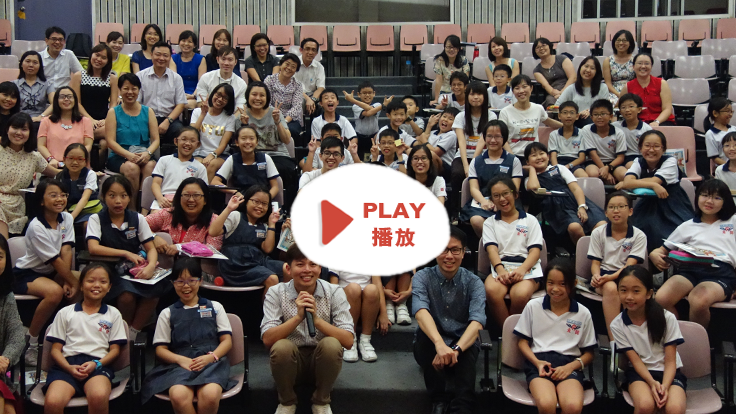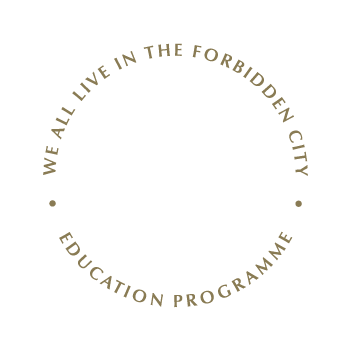Exchanges and training
The Education Programme places great importance on exchanges and training as a key to developing and strengthening team members’ experience and knowledge of culture as well as unleashing their talents to the fullest. The Education Team strives to open up development possibilities for the programme by actively taking part in visits and exchanges and collaborating with like-minded local and overseas organisations.
 |
 |
 |
 |
Chronicle
2017-10Since 2008, “We All Live in the Forbidden City” education programme aims to explore and promote the modern-day significance of traditional culture. It has developed a variety of theme-oriented education activities, trials and practices with different institutions from all over the world for many years.
The programme is finally home in July this year!
Honored to be contract partner, the Design and Cultural Studies Workshop takes part in the“We All Live in the Forbidden City” Exhibition in Palace of Great Benevolence (Jingren Gong) from 18th July to 18th October 2017 , which is jointly organized by the Palace Museum and the Leisure and Cultural Services Department (LCSD) of the HKSAR Government.
The exhibition includes four parts: Strolling the Palace Ground, Admiring Palatial Architecture, the Imperial Family Tree and Get Animated, and consists of displays, 3-D models and multimedia for children, teenagers and the public to appreciate Chinese culture in this imperial palace in a vivid and delightful way.
The Director of the Palace Museum Dr. Shan Jixiang, the Deputy Director of LCSD Dr. Louis Ng Chi-wa made a speech at the opening ceremony, hosted by the Executive Deputy Director of the Palace Museum Mr. Wang Yamin with the attendance of the Permanent Secretary for Home Affair Mrs. Betty Fung, the Deputy Director of the Palace Museum Mr. Lou Wei and Mr. Li Xiaocheng.
On 29th July, sitting straightly and orderly in lines, kids are ready for the“We All Live in the Forbidden City”education workshop in Palace of Great Benevolence (Jingren Gong).
The classroom is relocated from schools to the palace where the Kangxi Emperor was born. Parents and kids are experiencing the solemn atmosphere of it and looking for the “treasure” by appreciating cultural knowledge, architectural techniques, people and stories from the exhibition to explore this place in an in-depth way.
Workshops are organized by the Department of Information Technology in the Palace Museum and hosted by Design and Cultural Studies Workshop.
Our education team visited "from Son of Heaven to Commoner - Puyi, the Last Emperor of China", scheduled to close on Feb 13, in Hong Kong Museum of Coastal Defence, in which 73 exhibits, own by Aisin-Gioro Puyi, were demonstrated. The exhibition showed his legendary life and the social conditions at that time, beginning with the young Puyi designated heir to the throne by Empress Dowager Cixi in 1908, then his experience from the 1911 Resolution, to the Machu Restoration, to the administration of Empire of Manchukuo, to the reform in Fushun War Criminals Management Centre, and ultimately he was granted amnesty.
Puyi's clothing were impressive, for instance, the small dragon robe, the uniform of Concordia Association of Manchukuo, the uniform at Fushun and padded cotton jacket, reflecting his different roles and the changes of time - the small dragon robe, was worn only once by Puyi when he ascended to the throne at about three years old, which represents his role of emperor in a closed society stepping towards the peace before the revolutionary movements. the uniform of Concordia Association of Manchukuo, implied Puyi became Japanese puppet - the association, founded in 1932, nominally enhanced the united glory of five races including Manchus, Hans, Japanese, Korean and Mongols, but it was the political tool of the Japanese for overseeing the Empire of Manchukuo. As for the uniform at Fushun, it represented the foundation of new China. He became a war criminal and experienced ten-year re-education and reform. Lastly, he was a commoner who wore the mended jacket, revealing his frugal life after returning to Beijing.
The idea of "emperor" seems far away with his high status from us. Nonetheless, we could see the other aspects of his life. Puyi was talented with languages. Starting learning English in 16 years old, he could use full sentences for public speech. At the same time, he was inspired and affected by his English teacher, Reginald Fleming Johnston, being fond of western lifestyle, which can be shown in the exhibition by demonstrating his camera, radio, telephone, vinyl records and short-sightedness correction glasses. However, after the Second World War, in the International Military Tribunal for the Far East where he testified for eight days, he claimed he had no recollection of the events related to Japanese invading and emphasized he was the victim for covering up being in collusion with Japan. Finally he was released for no crime. As the last emperor of the last dynasty in China, his encounter was extremely varied from the emperors in flourishing ages. From this visit, we could see the humane side of an emperor.
Clothes reflect one's character. When our education team conceived the emperor-themed curriculum of the Primary School Kit, the relationship and meanings among the clothes of the emperor, the character and the status were encouraged to consider. One of the content of it is the Paintings of Amusement of the Emperor Yongzheng, who changed his clothes like cos-playing - pretending a westerner with a wig stabbing a tiger, an aged fisher with a straw hat fishing in a freezing river, a literati with wide-sleeve robe......Those paintings were created since the Emperor Yongzheng was busily engaged in official business. In his spare time, he found the count painter to draw him self-portraits in pursuit of playing different roles and imagining various kinds of life.
One imagined himself to be a commoner, but another one encountered the experience from the son of heaven to commoner. Though both Puyi and the Emperor Yongzhen had distinguishing destiny, they were different from the real "commoners", who can choose and accomplish their wish according to their wills. On the other hand, the emperor has power with lots of limitations. Perhaps this is the reason the Emperor Yongzhen changed his clothes in the paintings and Puyi insisted the second and the third enthronement.
When a tree leave drops on the soil, it will become part of soil; on the other side, if it’s placed into “another kind of soil” (tea ware), it will reveal not only the taste of nature but also our attitude towards nature. Recently, the education team has visited Flagstaff House Museum of Tea Ware learning this kind of fired “soil” - tea ware.
Just like the habit of tea drinking, tea ware would change and develop depending on the need, interest and trend of different generations. On the ground floor of the museum, there was a permanent exhibition called “Chinese Tea Drinking” showing different kinds of tea ware from Tang Dynasty to Qing Dynasty and the history of tea making and drinking customs. For example, people in Tang Dynasty boiled tea with Chinese onion, ginger and mint; people in Song Dynasty turned tea-leaves into powder and mixed it with boiling water by bamboo whisks; people in Yuen Dynasty enjoyed adding cheese milk into tea; tea-lovers in Ming Dynasty were precise about tea-making from the amount of ingredients, boiling temperature, the size of tea leaves to the shape of the teapots; people in Qing Dynasty preferred using tea-cup with lid for both self-enjoyment and sharing.
Through the manipulation of craftsman, soil becomes a variety of delicate tea wares. On the 2nd floor of the museum, there was an exhibition "2016 Tea Ware by Hong Kong Potters Competition" displaying a series of selected tea sets created by ceramic artists in Hong Kong. Among all, the tea sets were diverse in form and looked like different objects in daily lives such as stones, ships, gardens, animals and etc. They were not simply the pottery but the art pieces reflected creators’ various thinking towards nature, life and happiness. For instance, there was a tea set which looked like a real tree truck. The creator intended to apply different wood texture on the surface of the pottery and then boil the pieces in tea suggesting a sense of nature. Through using natural materials to contain natural ingredients, people can taste the real delight of nature. Tea and tea pots are an interesting yet amazing combination ultimately.















